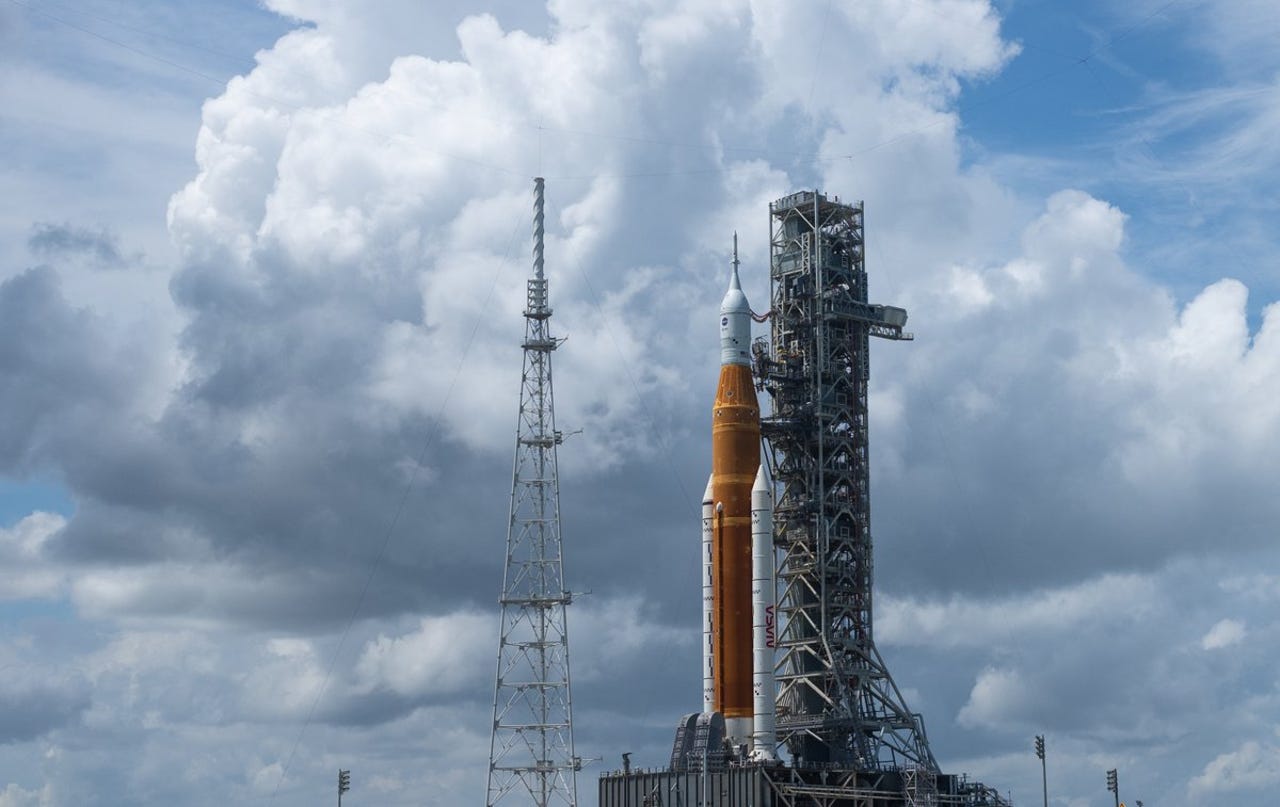































 Image: NASA
Image: NASA NASA has decided to skip the Artemis I launch attempt on Tuesday September 27 due to a Tropical Storm Ian threatening large parts of Florida.
NASA earlier this month pencilled in its third Space Launch System rocket and Orion launch attempt for September 27 with a backup date on October 2. The previous attempts were called off due to hydrogen leaks and engine problems.
This time, Florida is bracing for Tropical Storm Ian to become a major hurricane by the time it reaches the west coast of the peninsula, which could happen as early as Tuesday, CNN reports.
Also:What is Artemis? Everything you need to know about NASA's new moon mission
On Saturday, NASA engineers decided to stand down the Tuesday launch attempt at the Kennedy Space Center, located on Florida's east coast.
In an update on Sunday, NASA said it was conducting final preparations for rolling back the Artemis I SLS rocket and Orion spacecraft to the Vehicle Assembly Building.
"Managers met Sunday evening to review the latest information on the storm from the National Oceanic and Atmospheric Administration, the U.S. Space Force, and the National Hurricane Center and decided to meet again Monday to allow for additional data gathering overnight before making the decision on roll back," NASA's Rachel Kraft said.
NASA is weighing up what steps to take to protect the SLS while giving NASA employees time to take shelter with their families. Keeping it on the launch pad, rather than rolling it back, would preserve the October 2 launch date.
"To protect our employees and the integrated stack, we will begin configuring the vehicle to roll back," Jim Free, NASA's associate administrator for exploration systems development, wrote in an update on Saturday.
Thanks to our partners at @NOAA, @SpaceForceDoD, & @NHC_Atlantic and their high-quality forecasting, we're standing down from our Sept 27#Artemis launch attempt. To protect our employees and the integrated stack, we will begin configuring the vehicle to roll back. (1/2) pic.twitter.com/gcrNRpoyts
- Jim Free (@JimFree) September 24, 2022
"A final decision on rolling back to the Vehicle Assembly Building will be made tomorrow, but this step-wise approach gives our employees time to address the needs of their families while preserving a launch opportunity if conditions improve."
The SLS is NASA's most powerful rocket to date. The SLS core stage, manufactured by Boeing, measures 212 feet (64.6 meters) high with a diameter of 27.6 feet (8.4 meters).
The Artemis I mission is an unmanned demonstration test that will see Orion travel around the moon and back to Earth. The launch date must be timed for Orion to make a daylight splashdown, so it's easier to retrieve the spacecraft from the Pacific Ocean. NASA plans to launch a human Artemis mission to the Moon in 2024 or 2025.
Artemis has cost NASA$40 billion so far and is projected to cost$93 billion through to 2025.
 Hot Tags :
Innovation
Space
Hot Tags :
Innovation
Space